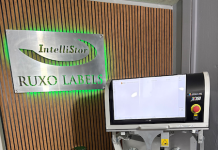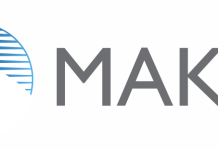The digital transformation at Heidelberg and the vocational training there go hand in hand, with digital content becoming increasingly important in various areas and also making the training programme more attractive.
Virtual learning content and the use of cutting-edge virtual reality technologies are now standard in many occupational profiles. Heidelberg also regularly reviews the occupations for which training is available and adapts these to requirements.
By now also offering training for budding IT specialists, the company is responding to the demand caused by the digital revolution. Three young people from the new intake for the 2019 training year will be starting out on this career.
The training year at Heidelberger Druckmaschinen AG (Heidelberg) started on September 1. Another 99 young men and women are embarking on their training or dual study courses at one of the company’s four sites in Germany in 2019.
Based on the number of applications received, the growth in the popularity of dual study courses is continuing. ‘We put this down to the increased digital learning content in the various courses. A growing number of digital methods and tools have been introduced in all study and training courses in recent years,’ said Andreas Blum, who is in charge of vocational training at the Wiesloch-Walldorf site, focusing on commercial training, degree courses, and marketing.
The dual study course in digital media/media management and communication teaches technical principles such as web development and internet technologies while also analysing electronic operating concepts, especially e-commerce, mobile applications, and media strategies. In the main part of their course, students learn about media automation, together with planning and implementing media projects. The curriculum also includes quantitative and qualitative channel publishing and media research methods, such as customer process analyses, blogs and social networks, and online systems.
The interdisciplinary Business IT course teaches key business management and information technology skills. Dual study course students tackle interesting projects – at the interface between technical and development departments, for example. As with all such courses, the aim is for students to draw inspiration for their own ideas and then immediately put these into practice. Heidelberg currently has a total of four students per year on these two courses of study.
‘Not only digital technologies, but above all, well-trained and highly motivated staff are key to a company’s successful digitisation,’ underlines Rainer Haus, who is in charge of vocational training and personnel development at Heidelberg. ‘Young employees, or digital natives as we also call them, are the ones who can bring experiences from their own digital environment into the business world and have the courage also to introduce disruptive ideas that drive companies’ progress with digitisation. The wider range of IT-related occupations for which we offer training and dual study courses takes this trend into account,’ he added.
The company’s biggest training site, which currently has a total of 242 trainees and students, including 75 from this year’s new intake, is Wiesloch-Walldorf. Once again, three of the five participants in the collectively agreed foundation year have been accepted to start training as future warehouse operators in the new training year. Heidelberg currently employs a total of around 340 trainees and students at its Wiesloch-Walldorf, Brandenburg, Amstetten, and Ludwigsburg sites. On account of the company’s demographics, almost all graduating trainees are being offered employment.
Heidelberg Graphic Systems SA (Pty) Ltd 0861424756 tamara.franco@heidelberg.com http://www.heidelberg.com/za





















